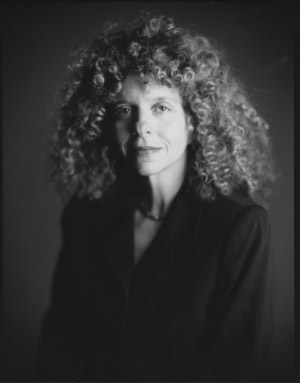BIOGRAPHY
Barbara Kruger was born in 1945 in Newark, New Jersey. Kruger briefly attended Syracuse University, then Parsons School of Design in New York City, where she studied with artists and photographers Marvin Israel and Diane Arbus. Kruger worked in graphic design for Condé Nast Publications at Mademoiselle magazine, and was promoted to head designer within a year, at the age of twenty-two. Kruger has described her time in graphic design as “the biggest influence on my work…[it] became, with a few adjustments, my ‘work’ as an artist.”
In the early 1970s, Kruger started showing artwork in galleries in New York. At the time, she was mainly working in weaving and painting. However, she felt that her artwork lacked meaning, and in 1976, she quit creating art entirely for a year. She took a series of teaching positions, including at University of California, Berkeley. When she began making art again in 1977, she had moved away from her earlier style into photo and text collages. In 1979, Kruger developed her signature style using large-scale black-and-white images overlaid with text. She repurposed found images, juxtaposing them with short, pithy phrases printed in Futura Bold or Helvetica Extra Bold typeface in black, white, or red text bars. In addition to creating text and photographic works, Kruger has produced video and audio works, written criticism, taught classes, curated exhibitions, designed products, such as T-shirts and mugs, and developed public projects, such as billboards, bus wraps, and architectural interventions.
Kruger addresses media and politics in their native tongue: sensational, authoritative, and direct. Personal pronouns like “you” and “I” are staples of Kruger’s practice, bringing the viewer into each piece. “Direct address has motored my work from the very beginning,” Kruger said. “I like it because it cuts through the grease.” Kruger’s work prompts us to interrogate our own positions; in the artist’s words, “to question and change the systems that contain us.” She demands that we consider how our identities are formed within culture, through representation in language and image.

Click here to return to the artist’s page
